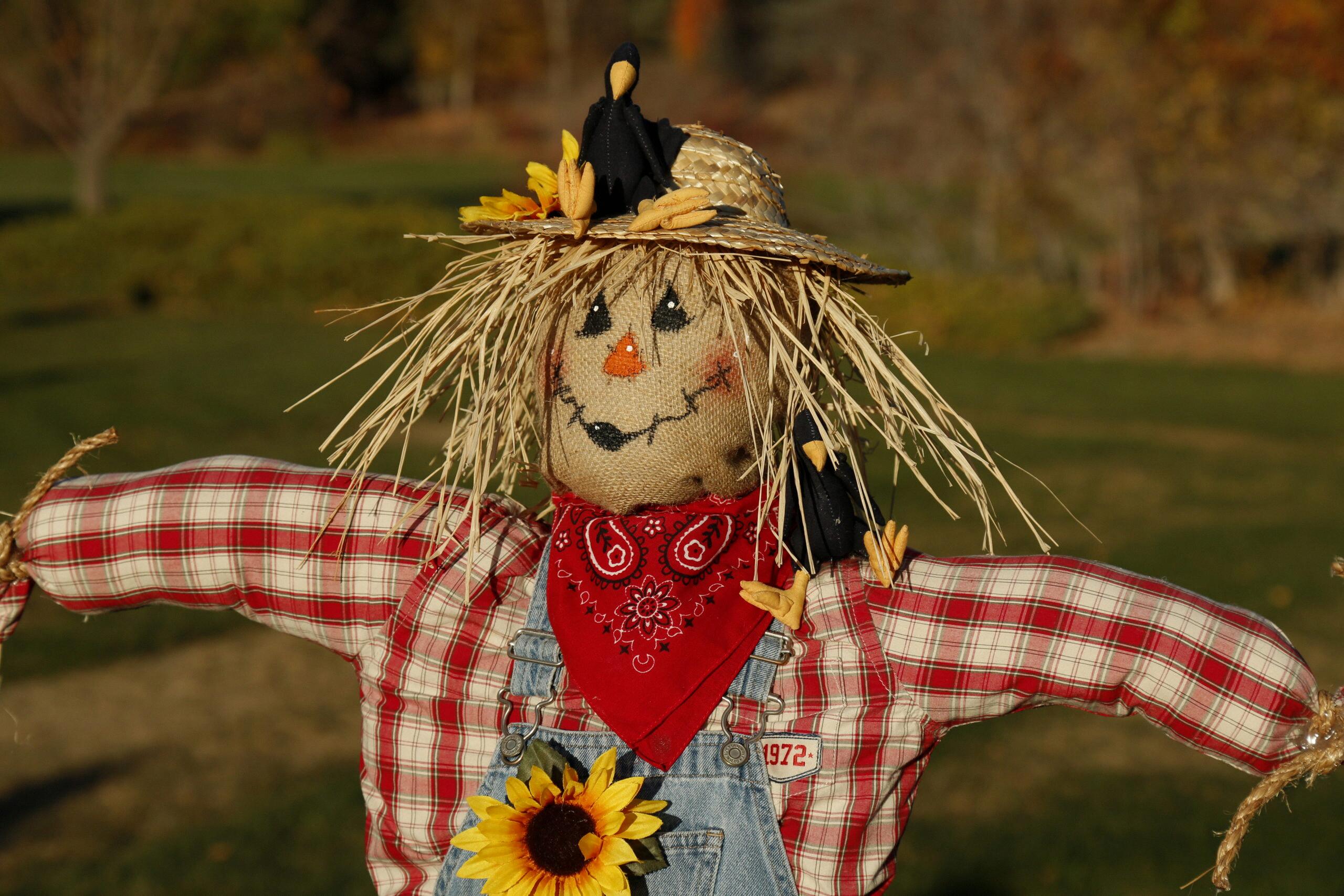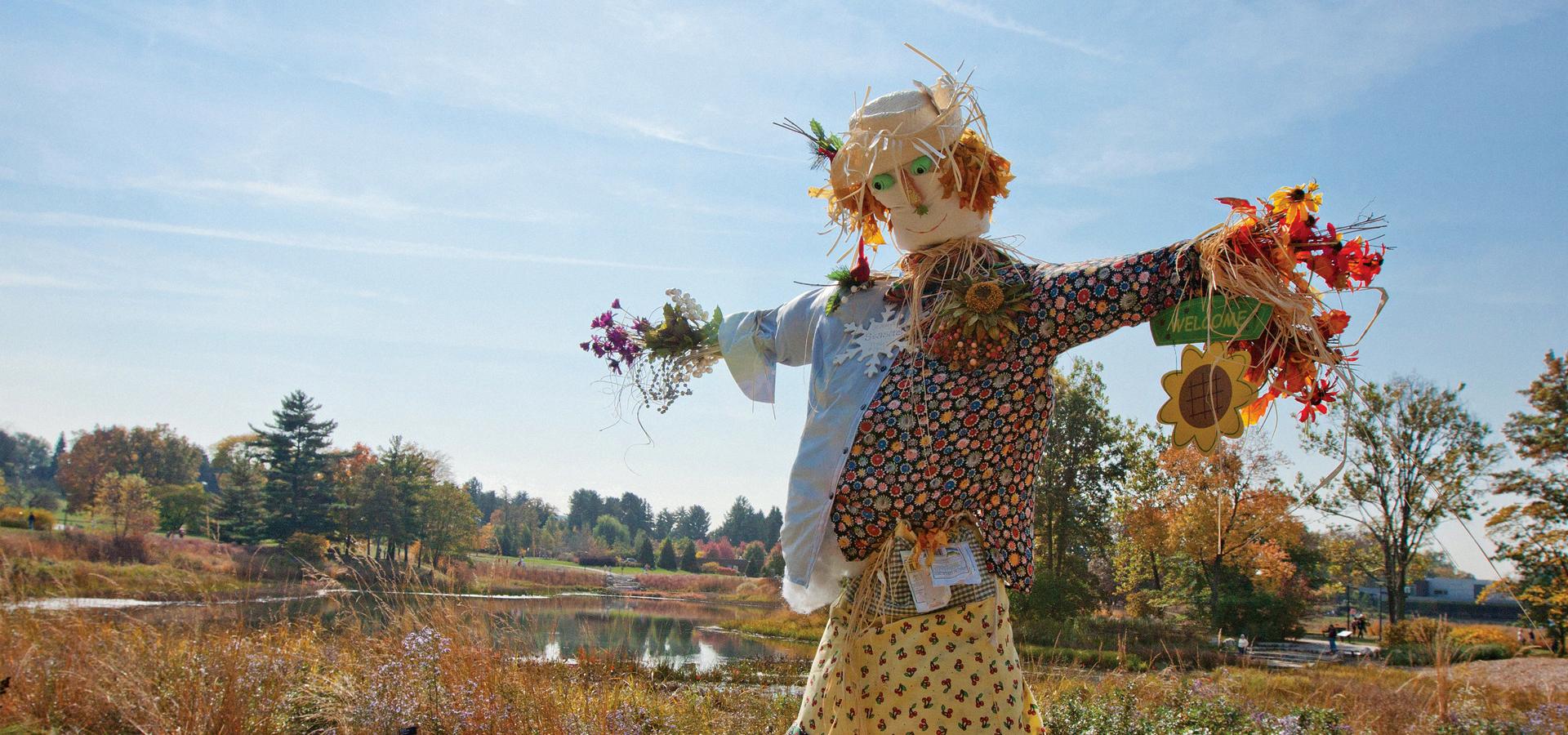Scarecrows have been a popular solution for deterring birds from gardens and farms for centuries. But do they really work? In short, the answer is yes, but there are some important factors to consider.
First and foremost, it’s important to understand what scarecrows are and how they work. Scarecrows are human-like figures, usually made of straw or other materials, that are placed in gardens or fields to scare off birds. The idea is that the birds will see the scarecrow and thnk it’s a person, which will scare them away.
The effectiveness of scarecrows largely depends on the type of birds you’re trying to deter. They tend to work best on larger birds, like crows, who are more easily frightened by human-like figures. Smaller birds, like finches and robins, may not be as intimidated by scarecrows and may still feed on your crops.
Another important factor to consider is the placement of your scarecrow. Scarecrows are most effective when they’re moved around frequently. This is because birds will eventually get used to the scarecrow and realize that it’s not a real person. By moving the scarecrow around, you can keep the birds on their toes and prevent them from getting too comfortable.
In addition to moving your scarecrow around, you can also make it more effective by adding other deterrents. For example, you can hang shiny objects like CDs or aluminum foil from the scarecrow’s arms to create even more movement and noise. You can also use bird netting or other physical barriers to keep birds away from your crops.
It’s worth noting that scarecrows are not a foolproof solution. Some birds may still be brave enough to approach your garden or crops, even with a scarecrow present. Additionally, scarecrows may not be effective in all situations. If you have a large garden or farm, you may need multiple scarecrows to effectively deter birds.
In conclusion, scarecrows can be an effective bird deterrent, but they require some effort and experimentation to get right. By moving your scarecrow around, adding other deterrents, and being mindful of the types of birds you’re trying to deter, you can increase your chances of success. And if all else fails, remember that scarecrows are still a charming symbol of the countryside, even if they don’t scare off all the birds!
Do Scarecrows Deter Birds?
Yes, scarecrows are effective in keeping birds away from crops and gardens. While they are most commonly used to deter crows, they can also work for other bird species such as robins and finches. The scarecrow is designed to mimic a human presence, which can scare birds away from the area. Birds are wary of humans, so the sight of a scarecrow can be enough to keep them at a distance. Additionally, the movement of the scarecrow in the wind can add to its effectiveness. However, it is important to note that birds can becoe accustomed to the presence of a scarecrow over time, so it is recommended to move the scarecrow periodically or use other bird deterrents in combination with the scarecrow.

Source: thanksgivingpoint.org
Do Scarecrows Serve a Purpose for Farmers?
Yes, farmers do actually use scarecrows. Scarecrows have been used for centuries as a simple and effective way to protect crops from birds and other animals that may feed on them. The scarecrows are made to look like humans, with old clothes and straw or other materials as stuffing. They are then placed in open fields to help deter birds and other animals from feeding on the crops. Scarecrows are still used today by farmers aound the world, and are a recognizable symbol of farms and the countryside. While there are many other methods for protecting crops, scarecrows remain a popular option due to their simplicity and effectiveness.
What Can a Scarecrow Keep Away?
A scarecrow is primarily used to keep birds away from specific areas, such as gardens, farms, and crops. It is designed to emulate a human figure, with the aim of scaring birds away from the area, as they perceive it as a potential danger. Scarecrows are effective in keeping various bird species away, including crows, pigeons, sparrows, and seagulls. However, it is important to note that scarecrows may not be effective in deterring all birds, especially those that have become habituated to ther presence. Additionally, scarecrows are not known to repel other pests like rodents or insects. Therefore, in situations where there are multiple pest issues, other pest control methods may need to be employed in addition to scarecrows.
Decline of the Use of Scarecrows
Scarecrows are stll used in some farming communities, but their effectiveness in deterring pests has been questioned. One reason for this is that pests, such as birds and rodents, can become accustomed to the presence of scarecrows and learn that they pose no real threat. Additionally, scarecrows are typically stationary and do not move, so they may not be effective in scaring off smarter pests. Moreover, modern farming techniques, such as crop rotation and the use of pesticides, have made scarecrows less necessary. Finally, some farmers have found that more advanced techniques, such as netting and electronic repellents, are more effective at deterring pests and protecting their crops. So, while scarecrows may still have some use in traditional farming communities, they are no longer considered a reliable and effective pest control method for many modern farmers.
Permanent Solutions for Scaring Birds Away
There are several ways to permanently scare birds away from your property. One effective method is to use bird netting, which is a physical barrier that prevents birds from entering the area. Another option is to install bird spikes, which are plastic or metal spikes that make it difficult for birds to land on buildings or other structures. You can also use bird repellent sprays, which contain natural or synthetic ingredients that birds find unpleasant, such as capsaicin or methyl anthranilate. Additionally, you can try using sound deterrents, such as predator calls or ultrasonic devices, which emit high-pitched noises that birds find irritating. It is important to note that while tese methods can be effective, they may require ongoing maintenance to keep birds from returning.

Source: mortonarb.org
The Effectiveness of Tin Foil in Deterring Birds
Yes, tin foil or aluminum foil is an effective way to deter birds from coming near your home or garden. Birds don’t like the feel of the foil under their beaks and will stay away. You can also hang strips of aluminum foil (or shiny party streamers) from the trees or other high points arond your home and garden. The sun reflects off the shiny surface and bothers their eyes, deterring them from coming near. However, it’s important to note that this method may only work temporarily as birds can become accustomed to the foil over time. Additionally, it’s important to ensure that the foil or streamers do not pose a safety hazard for birds or other wildlife.
Alternatives to Scarecrows for Farmers
Farmers today use a variety of methods to keep pests away from their fields instead of relying solely on scarecrows. One effective method is using smelly or bad-tasting sprays that deter animals from approaching the crops. These sprays can be made from natural ingredients such as garlic, peppermint, or hot peppers, or they can be commercially produced. Another method is the use of physical barriers, such as fences, to keep animals out of the fields. These fences can be made from a variety of materials such as wood, metal, or plastic. In some cases, farmers may also use noise-making devices or visual deterrents, such as reflective tape or scare-eye balloons, to keep pests at bay. Overall, modern farming practices have evolved to include a range of techniques and technologies that help to protect crops from harm.
The Effectiveness of Scarecrows in Protecting Crops
Scarecrows provide protection to a circular area with a radius of 8 blocks to the north, east, south, and west, as well as 6 blocks to the northeast, southeast, southwest, and northwest. In total, a scarecrow protects an area of 248 blocks, which corresponds to a 17×17 square, excluding the 10 blocks in each corner. Therefore, if you place a scarecrow in a central location, it will protect all crops, plants, and animals within its range from being eaten or destroyed by hostile mobs such as zombies, skeletons, or creepers.
The Effectiveness of Scarecrows in Deterring Certain Animals
A scarecrow is primarily designed to deter birds, such as crows, pigeons, and sparrows, from eating or disturbing crops. However, scarecrows can also be effective in deterring other animals, including rabbits, squirrels, raccoons, and deer, depending on the placement and design of the scarecrow. Keep in mind that while scarecrows can be effective in some cases, they may not deter all animals and may need to be combined with other forms of animal control to protect crops fully.

Source: mentalfloss.com
The Best Crow Deterrents
The best crow deterrent varies depending on personal preferences and the severity of the crow problem. However, devices with reflective surfaces that spin or flap in the breeze can effectively frighten crows. You can purchase these devices or make them yourself by stringing up aluminum pie tins or discarded CDs around vulnerable plants, or tying helium-filled Mylar party balloons around your garden. Playing recorded crow distress calls can also effectively disperse crows. It is important to note that these methods may need to be rotated or combined to maintain their effectiveness over time.
The Effectiveness of Scarecrows in Scaring Away Birds
Scarecrows are typically used to scare away birds such as crows, blackbirds, and starlings. These birds are known to cause damage to crops by feeding on seeds and sprouts, which can result in reduced yields for farmers. The presence of a scarecrow in an open field can be effective in deterring these birds from approaching and feeding on the crops. However, it is important to note that some bird species may not be deterred by scarecrows, and additional methods may need to be employed to protect crops.
The Best Crow Scarer: What to Look For
When it comes to crow scarers, there are sveral options available in the market. However, the best crow scarer depends on your specific needs and preferences.
One effective and natural option is the Gardeneer By Dalen Natural Enemy Scarecrow. This product features a realistic-looking owl head that scares crows away from your garden or property. It is made of durable materials and can be easily mounted on a stake or hung from a tree.
Another option is the Bird Steel & Plastic Spikes which are designed to prevent birds from landing or roosting on surfaces such as roofs, ledges, and fences. These spikes are easy to install and can be cut to fit any size or shape.
If you prefer a more high-tech approach, the Orbit 62100 Yard Enforcer Motion Activated Sprinkler may be the best option for you. This device uses a motion sensor to detect crows and sprays a stream of water, scaring them away from your property. It is eco-friendly and safe for both humans and animals.
For larger areas, heavy-duty bird netting is an effective option. This netting can be draped over trees or structures to prevent birds from landing or nesting.
Other options include liquid bird deterrents such as Bird-X Bird Stop Liquid Bird Deterrent, 1-Gallon, and scarecrows with 3D eyes like the Bird-X Terror-Eyes Inflatable Bird Scare.
Ultimately, the best crow scarer depends on your specific needs and preferences. Consider factors such as the size of the area you want to protect, the level of bird activity, and your budget when choosing a crow scarer.
The Effectiveness of Scarecrows in Deterring Animals
Scarecrows are commonly used in gardens to deter animals such as birds, rabbits, and squirrels. They work by creating a visual deterrent that animals perceive as a predator or danger, causing them to avoid the area. However, the effectiveness of scarecrows can vary depending on various factors, such as the type of animal, the size of the garden, and the frequency of movement. To maximize their effectiveness, scarecrows shoud be moved frequently to simulate natural movement and avoid becoming familiar to animals. Additionally, it may be necessary to use other deterrents such as motion sensor lights or sprinklers to complement the scarecrow’s effectiveness. Overall, while scarecrows can be helpful in deterring animals, they should be used in conjunction with other methods for optimal success.

The End of an Era: When Did Farmers Stop Using Scarecrows?
Farmers stopped using scarecrows as a part of their farming tools after World War II, when they realized that they could achieve better results by using pesticides like DDT to protect their crops. However, the use of DDT was discontinued in the 1960s when it was discovered that it was harmful to human health. Therefore, scarecrows remained in use until the mid-20th century, after which they were gradually replaced by other methods of crop protection.
The Effectiveness of Scarecrows in Deterring Crows
Scarecrows are designed to scare away birds, especially crows, from crops and gardens. However, their effectiveness in deterring crows is limited and short-term. Crows are intelligent birds that can quickly learn that the scarecrow is harmless and does not pose a threat. They may even become accustomed to the presence of the scarecrow and begin to ignore it. Additionally, scarecrows are motionless, whch means they do not pose a real threat to the birds. Therefore, while scarecrows may offer some initial protection against crows, they are not a reliable long-term solution for deterring these birds. Other methods, such as bird netting, bird spikes, or scare devices that move and make noise, may be more effective in keeping crows away from crops and gardens.
Conclusion
In conclusion, scarecrows have been used for centuries as a bird deterrent in agricultural fields and gardens. They are particularly effective in organic gardens, where the goal is to scare birds away from crops without harming them. However, the effectiveness of scarecrows depends on thir novelty, as birds can quickly become accustomed to them and disregard them as a threat. To maximize their effectiveness, it’s important to regularly move and adjust the scarecrow’s position, add additional scarecrows, and incorporate other bird deterrent methods such as noise makers and reflective materials. Overall, while scarecrows can be a useful tool in bird control, it’s important to use them in conjunction with other tactics for the best results.
